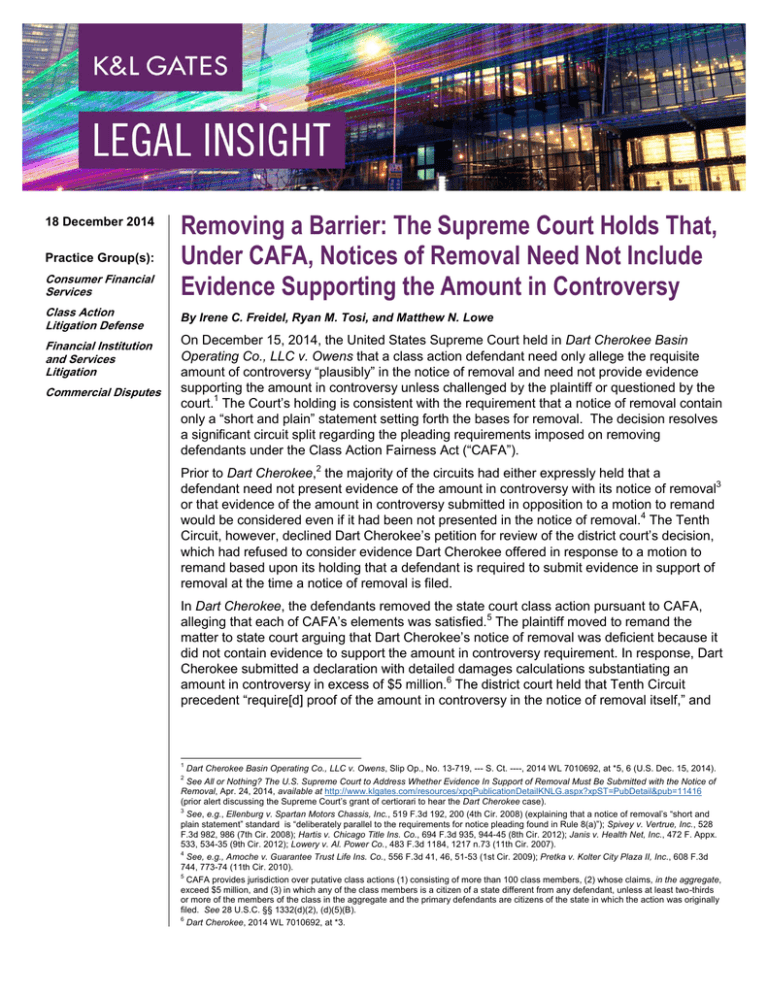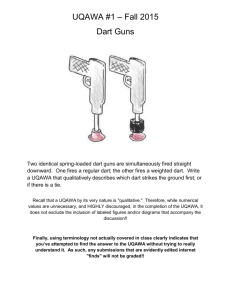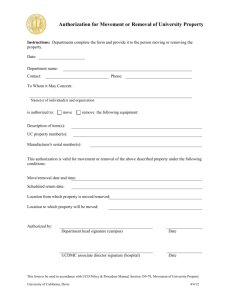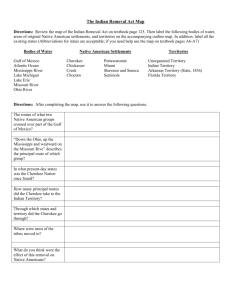
18 December 2014
Practice Group(s):
Consumer Financial
Services
Class Action
Litigation Defense
Financial Institution
and Services
Litigation
Commercial Disputes
Removing a Barrier: The Supreme Court Holds That,
Under CAFA, Notices of Removal Need Not Include
Evidence Supporting the Amount in Controversy
By Irene C. Freidel, Ryan M. Tosi, and Matthew N. Lowe
On December 15, 2014, the United States Supreme Court held in Dart Cherokee Basin
Operating Co., LLC v. Owens that a class action defendant need only allege the requisite
amount of controversy “plausibly” in the notice of removal and need not provide evidence
supporting the amount in controversy unless challenged by the plaintiff or questioned by the
court.1 The Court’s holding is consistent with the requirement that a notice of removal contain
only a “short and plain” statement setting forth the bases for removal. The decision resolves
a significant circuit split regarding the pleading requirements imposed on removing
defendants under the Class Action Fairness Act (“CAFA”).
Prior to Dart Cherokee,2 the majority of the circuits had either expressly held that a
defendant need not present evidence of the amount in controversy with its notice of removal3
or that evidence of the amount in controversy submitted in opposition to a motion to remand
would be considered even if it had been not presented in the notice of removal.4 The Tenth
Circuit, however, declined Dart Cherokee’s petition for review of the district court’s decision,
which had refused to consider evidence Dart Cherokee offered in response to a motion to
remand based upon its holding that a defendant is required to submit evidence in support of
removal at the time a notice of removal is filed.
In Dart Cherokee, the defendants removed the state court class action pursuant to CAFA,
alleging that each of CAFA’s elements was satisfied.5 The plaintiff moved to remand the
matter to state court arguing that Dart Cherokee’s notice of removal was deficient because it
did not contain evidence to support the amount in controversy requirement. In response, Dart
Cherokee submitted a declaration with detailed damages calculations substantiating an
amount in controversy in excess of $5 million.6 The district court held that Tenth Circuit
precedent “require[d] proof of the amount in controversy in the notice of removal itself,” and
1
Dart Cherokee Basin Operating Co., LLC v. Owens, Slip Op., No. 13-719, --- S. Ct. ----, 2014 WL 7010692, at *5, 6 (U.S. Dec. 15, 2014).
See All or Nothing? The U.S. Supreme Court to Address Whether Evidence In Support of Removal Must Be Submitted with the Notice of
Removal, Apr. 24, 2014, available at http://www.klgates.com/resources/xpqPublicationDetailKNLG.aspx?xpST=PubDetail&pub=11416
(prior alert discussing the Supreme Court’s grant of certiorari to hear the Dart Cherokee case).
3
See, e.g., Ellenburg v. Spartan Motors Chassis, Inc., 519 F.3d 192, 200 (4th Cir. 2008) (explaining that a notice of removal’s “short and
plain statement” standard is “deliberately parallel to the requirements for notice pleading found in Rule 8(a)”); Spivey v. Vertrue, Inc., 528
F.3d 982, 986 (7th Cir. 2008); Hartis v. Chicago Title Ins. Co., 694 F.3d 935, 944-45 (8th Cir. 2012); Janis v. Health Net, Inc., 472 F. Appx.
533, 534-35 (9th Cir. 2012); Lowery v. Al. Power Co., 483 F.3d 1184, 1217 n.73 (11th Cir. 2007).
4
See, e.g., Amoche v. Guarantee Trust Life Ins. Co., 556 F.3d 41, 46, 51-53 (1st Cir. 2009); Pretka v. Kolter City Plaza II, Inc., 608 F.3d
744, 773-74 (11th Cir. 2010).
5
CAFA provides jurisdiction over putative class actions (1) consisting of more than 100 class members, (2) whose claims, in the aggregate,
exceed $5 million, and (3) in which any of the class members is a citizen of a state different from any defendant, unless at least two-thirds
or more of the members of the class in the aggregate and the primary defendants are citizens of the state in which the action was originally
filed. See 28 U.S.C. §§ 1332(d)(2), (d)(5)(B).
6
Dart Cherokee, 2014 WL 7010692, at *3.
2
Removing a Barrier: The Supreme Court Holds That, Under CAFA, Notices of
Removal Need Not Include Evidence Supporting the Amount in Controversy
therefore, granted plaintiff’s motion to remand the matter to state court.7 By divided panels,
the Tenth Circuit denied Dart Cherokee’s petition for appeal and for en banc review.8
Justice Ginsburg, writing for the majority, ruled that the district court improperly relied on a
“presumption against removal,” and noted that the language of the statutory requirements for
a notice of removal “tracks the general pleading requirement” applicable to pleadings such
as complaints.9 The Court held that in enacting the current version of the removal statute,
Congress acted to “simplify the ‘pleading’ requirements for removal” and intended for courts
to “apply the same liberal rules [to removal allegations] that are applied to other matters of
pleading.”10 The Court concluded that a removing defendant’s “amount-in-controversy
allegation should be accepted when not contested by the plaintiff or questioned by the
court.”11 The Court further held that if a plaintiff filed a motion to remand challenging a
defendant’s allegations in the notice of removal, the proper procedure is for both parties to
then submit proof, and for the district court to decide whether the amount in controversy
requirement is met under a preponderance of the evidence standard.12 Accordingly, “a
defendant’s notice of removal need include only a plausible allegation that the amount in
controversy exceeds the jurisdictional threshold [and] [e]vidence establishing the amount is
required by § 1446(c)(2)(B) only when the plaintiff contests, or the court questions, the
defendant’s allegation.”13
Notably, although four Justices dissented from the majority opinion, the disagreement did not
concern the evidence that needs to be submitted at the time of removal. Indeed, the
dissenters signaled their support for the majority opinion that evidence need not be
presented when a notice of removal is filed.14 Justice Scalia, writing for the dissenters, noted
that the Court was “[e]ager to correct what we suspected was the District Court’s (and the
Tenth Circuit’s) erroneous interpretation of § 1446.”15 However, he asserted that “[i]nstead
of correcting an erroneous district court opinion at the expense of an erroneous Supreme
Court opinion,” he would have dismissed the case as improvidently granted for lack of
jurisdiction and, failing that, he would have affirmed on the ground that the Tenth Circuit did
not abuse its discretion in declining to review the district court’s decision.16
Although the Dart Cherokee decision was decided in the context of removal pursuant to
CAFA and did not specifically address the broader issue concerning whether a “presumption
against removal” exists in traditional diversity cases, it may lay the foundation for removing
defendants to seek broader application in future cases. Much of the reasoning in Dart
Cherokee regarding the purpose and language of the applicable removal statute (28 U.S.C.
§ 1446) could apply to a removal under the either the traditional diversity statute or pursuant
to CAFA.17 Even if the Dart Cherokee decision is limited to CAFA, however, it firmly bolsters
7
Id. at *4; see Owens v. Dart Cherokee Basin Operating Co. LLC, No. 12-4157, 2013 WL 2237740, at *4 (D. Kan. May 21, 2013); see also
Frederick v. Hartford Underwriters Ins. Co., 683 F.3d 1242, 1246 (10th Cir. 2012) (requiring jurisdictional proof at the time of removal
through discovery, calculations, settlement demands, affidavits, or expert testimony).
8
See Dart Cherokee, 2014 WL 7010692, at *4; Dart Cherokee Basin Operating Co., LLC v. Owens, 730 F.3d 1234, 1234 (10th Cir. 2013).
9
See Dart Cherokee, 2014 WL 7010692, at *5, 6.
10
Id. at *5 (quoting H.R.Rep. No. 100–889, p. 71 (1988)).
11
Id.
12
Id.
13
Id. at *6.
14
Id. at *9, 14 (Scalia, J., dissenting).
15
Id. at *9; see also id. at *14 (referring to the “erroneous district court opinion”).
16
Id. at *14 (emphasis added).
17
See, e.g. id. at *5 (noting that Section “1446(a) tracks the general pleading requirement stated in Rule 8(a)”); id. (stating generally that
“when a defendant seeks federal-court adjudication, the defendant's amount-in-controversy allegation should be accepted when not
2
Removing a Barrier: The Supreme Court Holds That, Under CAFA, Notices of
Removal Need Not Include Evidence Supporting the Amount in Controversy
the efforts of removing defendants across the country. The Court’s confirmation that no
evidence need be provided at the time a case is removed to federal court sends the
message to all district courts – consistent with the intent and purpose of CAFA – that class
actions with allegations meeting CAFA’s requirements belong in federal, not state, court.
The Dart Cherokee decision also marks the second decision from the Supreme Court in the
past two years that eases restrictions on defendants removing class actions pursuant to
CAFA,18 signaling a positive trend for class action defendants.
Please visit our Class Action Defense and Consumer Financial Services Litigation practice
pages on the Web for additional information regarding the types of class actions defended by
K&L Gates and the lawyers who concentrate in these respective practices.
Authors:
Irene C. Freidel
irene.freidel@klgates.com
+1.617.951.9154
Ryan M. Tosi
ryan.tosi@klgates.com
+1.617.261.3257
Matthew N. Lowe
matthew.lowe@klgates.com
+1.617.951.9183
Anchorage Austin Beijing Berlin Boston Brisbane Brussels Charleston Charlotte Chicago Dallas Doha Dubai Fort Worth Frankfurt
Harrisburg Hong Kong Houston London Los Angeles Melbourne Miami Milan Moscow Newark New York Orange County Palo Alto Paris
Perth Pittsburgh Portland Raleigh Research Triangle Park San Francisco São Paulo Seattle Seoul Shanghai Singapore Spokane
Sydney Taipei Tokyo Warsaw Washington, D.C. Wilmington
K&L Gates comprises more than 2,000 lawyers globally who practice in fully integrated offices located on five
continents. The firm represents leading multinational corporations, growth and middle-market companies, capital
markets participants and entrepreneurs in every major industry group as well as public sector entities, educational
institutions, philanthropic organizations and individuals. For more information about K&L Gates or its locations,
practices and registrations, visit www.klgates.com.
This publication is for informational purposes and does not contain or convey legal advice. The information herein should not be used or relied upon in
regard to any particular facts or circumstances without first consulting a lawyer.
© 2014 K&L Gates LLP. All Rights Reserved.
contested by the plaintiff or questioned by the court”); id. at *6 (holding “as specified in § 1446(a), a defendant’s notice of removal need
include only a plausible allegation that the amount in controversy exceeds the jurisdictional threshold”).
18
See Standard Fire Ins. Co. v Knowles, 133 S. Ct. 1345 (2013) (holding class representatives cannot avoid CAFA jurisdiction by
stipulating to damages below the $5 million jurisdictional amount; defendant entitled to remove under CAFA); see also Classy Move: The
Supreme Court Rebuffs Class Action Forum Manipulation, Mar. 25, 2014 available at
http://www.klgates.com/resources/xpqPublicationDetailKNLG.aspx?xpST=PubDetail&pub=10263 (alert discussing Knowles decision).
3






